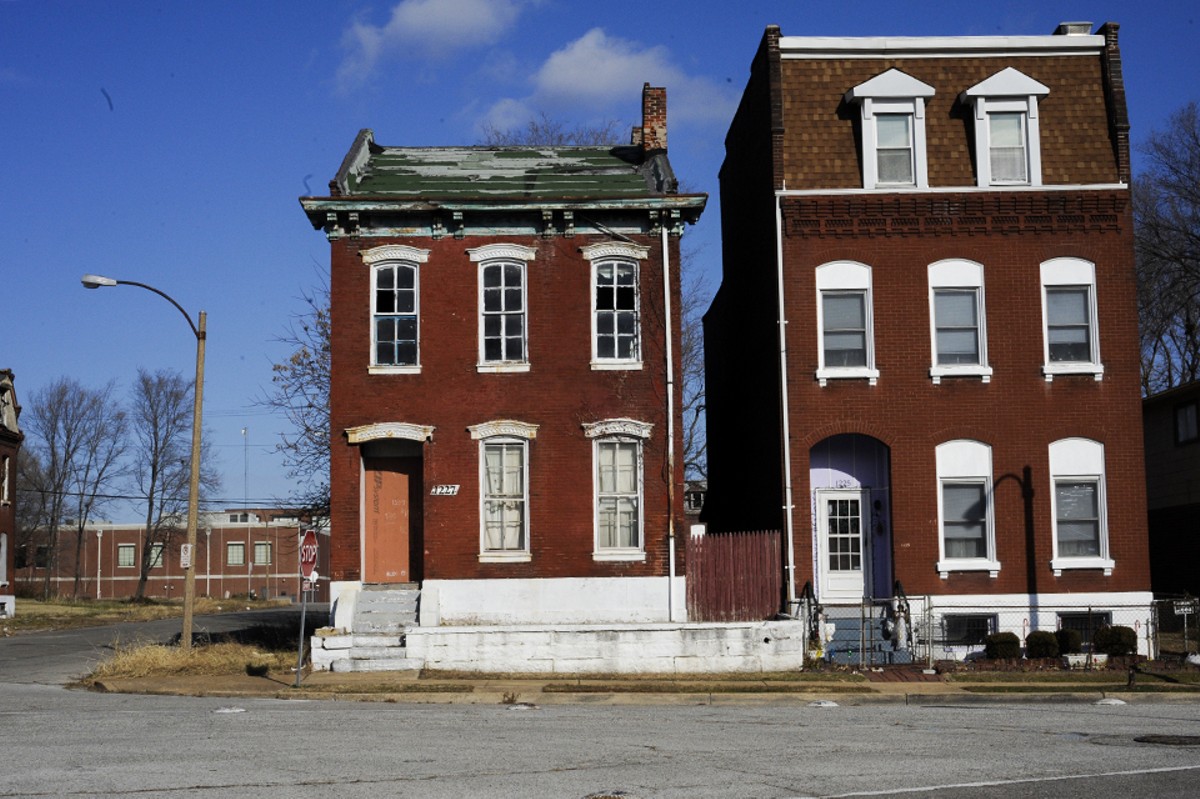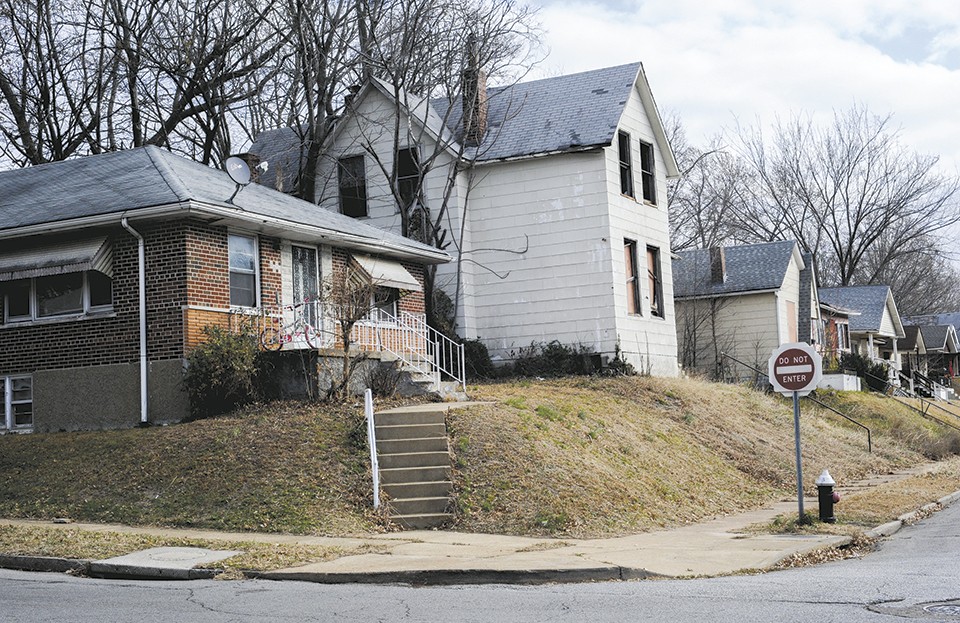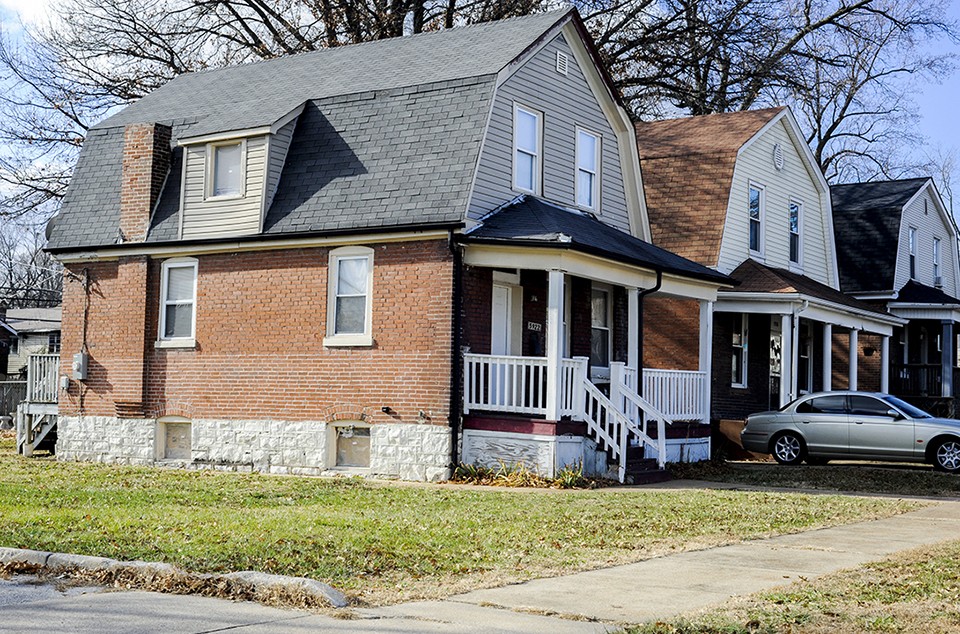Rebecca Bodicky, a florist on Cherokee Street, found that acquiring a vacant lot from the LRA for a garden proved maddeningly complicated.
Bodicky already owned a double lot that she'd purchased from a sheriff's sale, but acquiring the adjacent lot from LRA — a narrow strip of land 46 feet by 1 1/2 feet long — was much more difficult than she expected. Bodicky's original offer of $1,250 for the property was rejected and she ended up paying $2,374 for it (plus another $58 in recording fees). It then took months to complete the purchase, and when she finally did, the city's Forestry Division attempted to charge her for maintenance a month before she even had access to the property.
Bodicky says she would work with the LRA again, though.
"Yeah, I would, because there is really no choice," Bodicky says. She's already got her eye on another lot across the street — and it, too, is LRA owned.
The process can become political: A letter of support from the buyer's representative on the Board of Aldermen makes the entire process much smoother. Buyers don't officially need the letter, but if they don't have aldermanic approval, it's a dead deal. Bodicky, for one, found she needed the support of her alderwoman, Spencer, just to navigate the process.
Beyond that, Dearing says property titles come with complications if buyers aren't careful.
"The city will just order the deed from the Recorder of Deeds office," Dearing says. Buyers who pay for a property often assume they then own it free and clear. Dearing says that's not the case: "You don't know if someone else had a house there that owed some money on it, or there was a mortgage that was left over that the people are now responsible for, or there are some other kind of liens. A lot of times, even going through this process, there [are] liens on the property that are old from Forestry cutting the grass on it, that LRA hadn't even paid."
And if buyers don't ensure a clear title, they are technically responsible for old liens, Dearing says. The previous owners could also resurface and argue they have a claim if their name is still on the title.
"In other words," Dearing says, "if I buy it, and I fix the place all up, and plant a garden, or pave it and make a driveway or parking area and the people come back and say, 'Well, I own this.' No — I bought it. Well, run the title work and their name is on it. I mean, my name is on it too, but so is theirs. So it's messed up. Then you have to do legal work to sort that out."
Mike Baldwin, a developer in the city's 5th Ward, stopped buying property from LRA in 2010 after he had trouble getting sponsorship from his alderwoman.
"If you're not on friendly terms with your alderperson, it's difficult," Baldwin says. "In some cases, we had to get sponsorship from the president of [the Board of] Aldermen."
Baldwin says the only reason he is willing to talk about the LRA was because he no longer buys property from it.
"It's impossible to get these lots; it's impossible to get these buildings," Baldwin says. "By the time you get them, the building has deteriorated and you can't repair it."
In the past two years, two major reports have taken a hard look at vacancy in St. Louis. The general message from both is that while vacancy is a significant problem, the LRA is severely understaffed and underfunded.
The Center for Community Progress released its report in June 2016 after it selected St. Louis for its Technical Assistance Scholarship Program. The report found "no unified city vision regarding the elimination of vacancy and abandonment."
The second report, released in February, was done after the city asked the U.S. Environmental Protection Agency to conduct an independent assessment of the LRA as part of the "Strong Cities, Strong Communities" initiative. The EPA hired design firm Asakura Robinson, whose staff then interviewed 80 local stakeholders and also spent a year working with the LRA to develop a strategy for improvement.
The Asakura Robinson report outlined six goals: "Define a forward-looking, inclusive LRA mission and vision, formalize LRA policies and procedures, manage vacant properties comprehensively, foster clear communication and transparency to build trust, grow the LRA's staffing and financial resources and build and solidify partnerships."
The report found that the agency's policies were often too informal — "leaving the LRA vulnerable to unexpected changes in its relationships, political forces that can hamper the LRA's ability to use its limited resources strategically, and hampered in its ability to share information with the public about how the authority determines its priorities."
Both studies identified a lack of transparency from the LRA and deep mistrust from the community.
The report from Asakura Robinson states, "Media coverage and community feedback on the LRA reveals a perceived lack of transparency in LRA policy that has sometimes created conflict between residents, policymakers, and the LRA." The heart of the problem, though, "appears to arise from a dearth of adequate systems and resources to convey information to the public," the authors concluded.
Both reports suggest that St. Louis use the Kansas City Land Bank as a model. While St. Louis has been almost entirely reactive, waiting for prospective buyers to find its holdings, Kansas City has instead made a concerted effort to find buyers.
Since it began in 2012, the Kansas City Land Bank has implemented various types of sales, such as "the Heart of Kansas City Sale," offering nicer homes in its inventory for $999, or the "$1 sale," which sold homes intended for demolition for $1. The land bank then gave the $8,500 that had been earmarked to demolish the house to the new owner to use in repairing it.
The land bank also donated five acres to a group of social workers, says Executive Director Ted Anderson, who cites it as his favorite project. The Veterans Community Project aimed to build 50 tiny houses for homeless veterans.
According to a 2013 case study, Kansas City had 12,000 vacant or abandoned properties in 2012. The city spent approximately $1.8 million in upkeep and maintenance on those properties that year. Today, five years after the land bank's establishment, the agency has decreased its inventory to only about 4,000 properties.
However, the reports looking at St. Louis' land bank also acknowledge the significant constraints that the LRA operates under, a situation that makes Kansas City's success feel like an unfair comparison.
The LRA receives no funding from the city of St. Louis. In fact, its only dedicated source of revenue is whatever it earns from sales. In fiscal years 2015 and 2016, that was about $800,000.
And since it's not technically a city agency — it falls under the St. Louis Development Corporation, or SLDC, a not-for-profit with a separate charter — it has to pay the city agencies it works with, including the Collector of Revenue and the Recorder of Deeds. That eats up about one-eighth of its budget.
In contrast, the Kansas City Land Bank has an operating budget of approximately $2 million, even as it manages less than half the number of properties as the LRA. Eighty-five percent of its budget comes from the city's general fund, with just 15 percent coming from sales.
"We practically give our property away," Anderson says. "So we do it differently."
With a funding model like the one in St. Louis, he says, "we couldn't even pay our staff."








